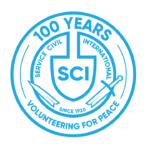Dear partners,
We are very happy to announce that we have a new long-term project.
_INDEPENDENT LIVING ALTERNATIVES__ takes place in London and enables
disabled people to live independently by providing a range of support
including personal care such as going to the toilet or bathing and
practical support such as shopping and cooking. Volunteering with ILA is
an opportunity to: – Gain a unique perspective on disability issues –
learn more about independent living – Experience living in London – Meet
new people and make new friends from across the world. _
_ _
ILA is looking for volunteers now, for at least 4 months and up to 12
months.
To know more about it, please read the project description attached. You
can also visit their website: https://www.ilanet.co.uk/
If your volunteers are interested in applying, please find attached the
specific application form and the medical form.
We are looking forward to receiving your volunteers’ applications.
Best wishes,
Justine Mann
Placement Officer
Thorn House, 5 Rose Street
Edinburgh EH2 2PR
Tel: 0131 243 2745
Web: www.ivsgb.org [1]
Registered Charity Numbers: 275424 and SCO39585
[2] [3]
Links:
——
[1] http://www.ivsgb.org/
[2] http://facebook.com/ivsgb
[3] http://twitter.com/ivsgb

